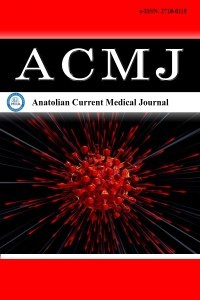1.
Baek H, Cho M, Kim S, Hwang H, Song M, Yoo S. Analysis oflength of hospital stay using electronic health records: a statisticaland data mining approach. PLoS One. 2018;13(4):e0195901.
2.
Higgins TL, McGee WT, Steingrub JS, Rapoport J, Lemeshow S,Teres D. Early indicators of prolonged intensive care unit stay:impact of illness severity, physician staffing, and pre-intensivecare unit length of stay. Crit Care Med. 2003;31(1):45-51.
3.
Pilcher DV, Bailey MJ, Treacher DF, Hamid S, Williams AJ,Davidson AC. Outcomes, cost and long term survival of patientsreferred to a regional weaning centre. Thorax. 2005;60(3):187-192.
4.
Martin CM, Hill AD, Burns K, Chen LM. Characteristics andoutcomes for critically ill patients with prolonged intensive careunit stays. Crit Care Med. 2005;33(9):1922-1927.
5.
Huang YC, Huang SJ, Tsauo JY, Ko WJ. Definition, risk factorsand outcome of prolonged surgical intensive care unit stay.Anaesth Intensive Care. 2010;38(3):500-505.
6.
Arabi Y, Venkatesh S, Haddad S, Al Shimemeri A, Al Malik S.A prospective study of prolonged stay in the intensive care unit:predictors and impact on resource utilization. Int J Qual HealthCare. 2002;14(5):403-410.
7.
Laupland KB, Ramanan M, Shekar K, Edwards F, Clement P,Tabah A. Long-term outcome of prolonged critical illness: amulticentered study in North Brisbane, Australia. PLoS One.2021;16(4):e0249840.
8.
Ervin JN, Kahn JM, Cohen TR, Weingart LR. Teamwork in theintensive care unit. Am Psychol. 2018;73(4):468-477.
9.
Shaw M, Viglianti EM, McPeake J, et al. Timing of onset,burden, and postdischarge mortality of persistent critical illnessin Scotland, 2005-2014: a retrospective, population-based,observational study. Crit Care Explor. 2020;2(4):e0102.
10.
Mok JH, Kim YH, Jeong ES, et al. Clinical application of theProVent score in Korean patients requiring prolonged mechanicalventilation: a 10-year experience in a university-affiliated tertiaryhospital. J Crit Care. 2016;33:158-162.
11.
Laupland KB, Kirkpatrick AW, Kortbeek JB, Zuege DJ. Long-term mortality outcome associated with prolonged admission tothe ICU. Chest. 2006;129(4):954-959.
12.
Ong AW, Omert LA, Vido D, et al. Characteristics and outcomesof trauma patients with ICU lengths of stay 30 days and greater: aseven-year retrospective study. Crit Care. 2009;13(5):R154.
13.
Friedrich JO, Wilson G, Chant C. Long-term outcomes andclinical predictors of hospital mortality in very long stay intensivecare unit patients: a cohort study. Crit Care. 2006;10(2):R59.
14.
Çevik B, Geyik FD. Prolonged stay in intensive care unit:retrospective analysis of predisposing factors and outcome. TurkJ Intensive Care. 2019;17:96-101.
15.
Suistomaa M, Niskanen M, Kari A, Hynynen M, Takala J.Customized prediction models based on APACHE II and SAPSII scores in patients with prolonged length of stay in the ICU.Intensive Care Med. 2002;28(4):479-485.
16.
Schönhofer B, Guo JJ, Suchi S, Köhler D, Lefering R. The useof APACHE II prognostic system in difficult-to-wean patientsafter long-term mechanical ventilation. Eur J Anaesthesiol.2004;21(7):558-565.
17.
Wu YK, Kao KC, Hsu KH, Hsieh MJ, Tsai YH. Predictors ofsuccessful weaning from prolonged mechanical ventilation inTaiwan. Respir Med. 2009;103(8):1189-1195.
18.
Meade M, Guyatt G, Cook D, et al. Predicting success in weaningfrom mechanical ventilation. Chest. 2001;120(6):400S-424S.
19.
Antonelli M, Moreno R, Vincent JL, et al. Application of SOFAscore to trauma patients. Intensive Care Med. 1999;25(4):389-394.
20.
Huang YT, Huang YH, Hsieh CH, Li CJ, Chiu IM. Comparisonof injury severity score, Glasgow coma scale, and revised traumascore in predicting the mortality and prolonged ICU stay oftraumatic young children: a cross-sectional retrospective study.Emerg Med Int. 2019;1:5453624.
21.
Liisanantti JH, Ohtonen P, Kiviniemi O, Laurila JJ, Ala-Kokko TI.Risk factors for prolonged intensive care unit stay and hospitalmortality in acute drug-poisoned patients: an evaluation of thephysiologic and laboratory parameters on admission. J Crit Care.2011;26(2):160-165.
22.
Petrella F, Radice D, Casiraghi M, et al. Glasgow prognosticscore class 2 predicts prolonged intensive care unit stay inpatients undergoing pneumonectomy. Ann Thorac Surg.2016;102(6):1898-1904.
23.
Okazaki Y, Shimojo N, Matsuishi Y, et al. Risk factors for prolongedintensive care unit and hospital stay among patients with acutedrug overdose in Japan. Acute Med Surg. 2020;7(1):e482.
24.
Lazaridis C, Yang M, DeSantis SM, Luo ST, Robertson CS.Predictors of intensive care unit length of stay and intracranialpressure in severe traumatic brain injury. J Crit Care. 2015;30(6):1258-1262.
25.
El-Anwar MW, Nofal AA, Shawadfy MA, Maaty A, Khazbak AO.Tracheostomy in the intensive care unit: a university hospitalin a developing country study. Int Arch Otorhinolaryngol.2017;21(1):33-37.
26.
Dimopoulou I, Anthi A, Lignos M, et al. Prediction of prolongedventilatory support in blunt thoracic trauma patients. IntensiveCare Med. 2003;29(7):1101-1105.
27.
Uchino S, Kellum JA, Bellomo R, et al. Acute renal failure incritically ill patients: a multinational, multicenter study. JAMA.2005;294(7):813-818.
28.
Nozawa E, Kobayashi E, Matsumoto ME, Feltrim MI, CarmonaMJ, Auler JJ. Assessment of factors that influence weaning fromlong-term mechanical ventilation after cardiac surgery. Arq BrasCardiol. 2003;80(3):301-310.
29.
Straney LD, Udy AA, Burrell A, et al. Modelling risk-adjustedvariation in length of stay among Australian and New ZealandICUs. PLoS One. 2017;12(5):e0176570.
30.
Al-Otaiby M, Almutairi KM, Vinluan JM, et al. Demographiccharacteristics, comorbidities, and length of stay of COVID-19patients admitted into intensive care units in Saudi Arabia: anationwide retrospective study. Front Med. 2022;9:893954.

